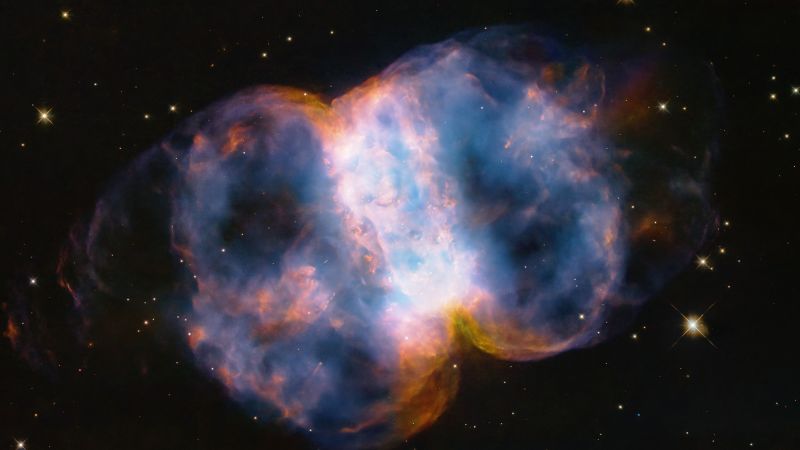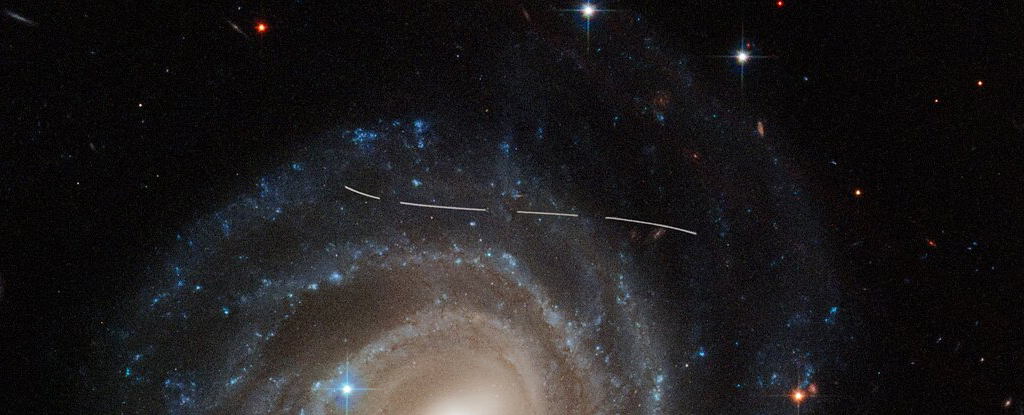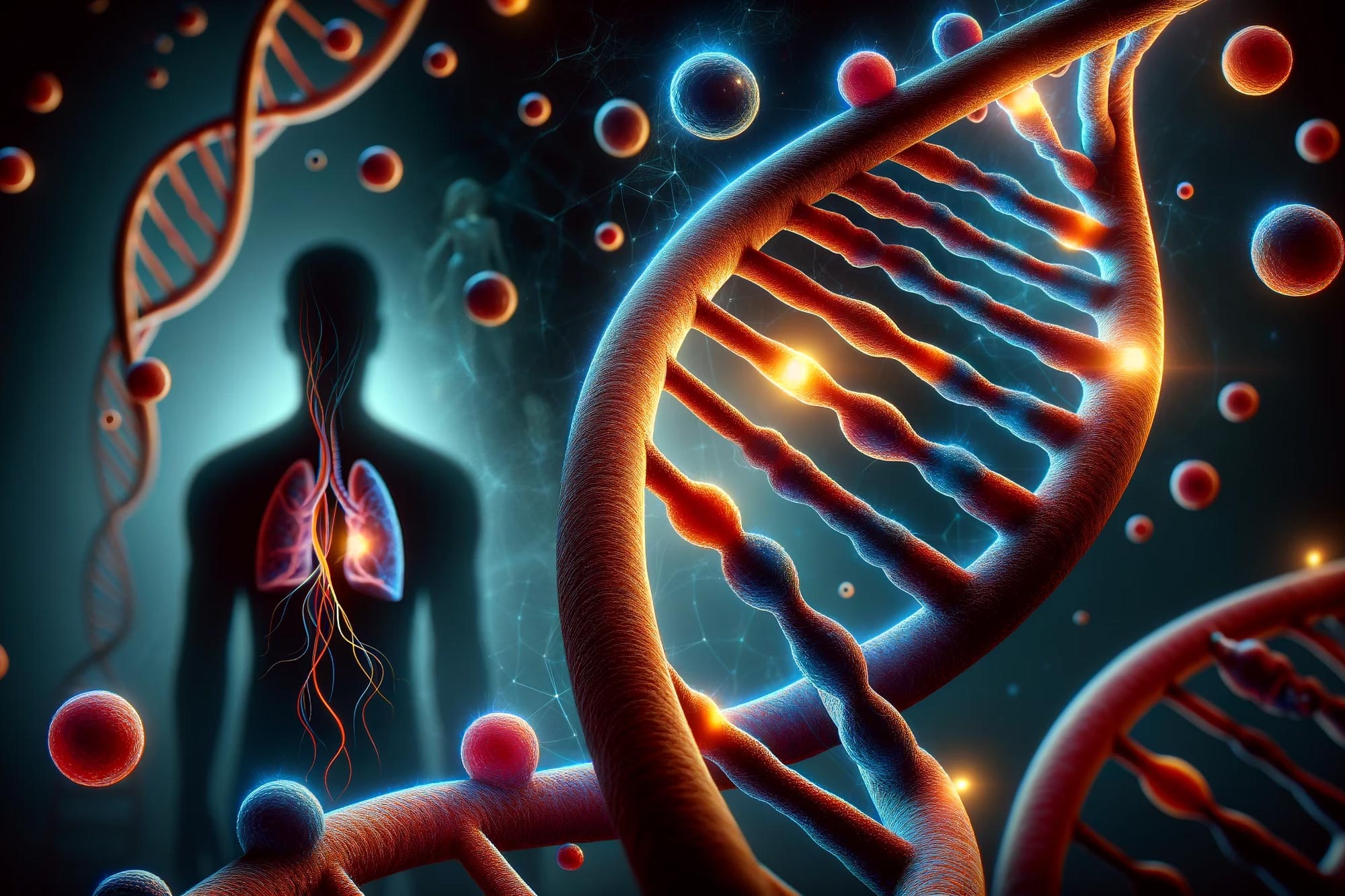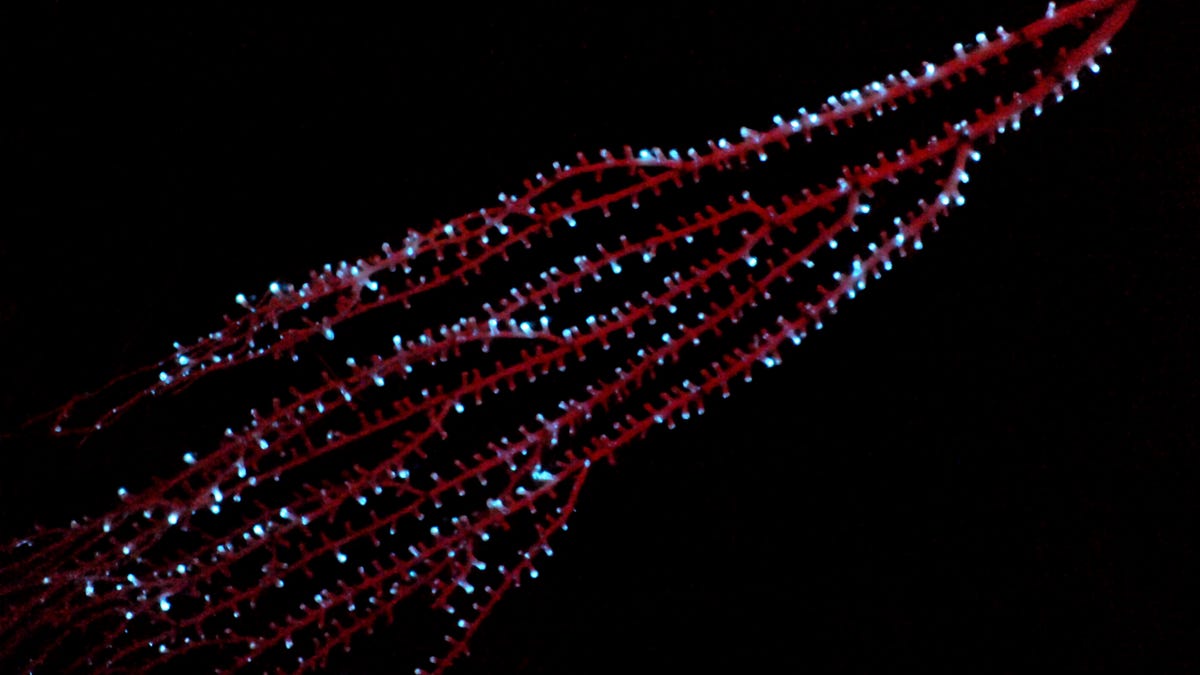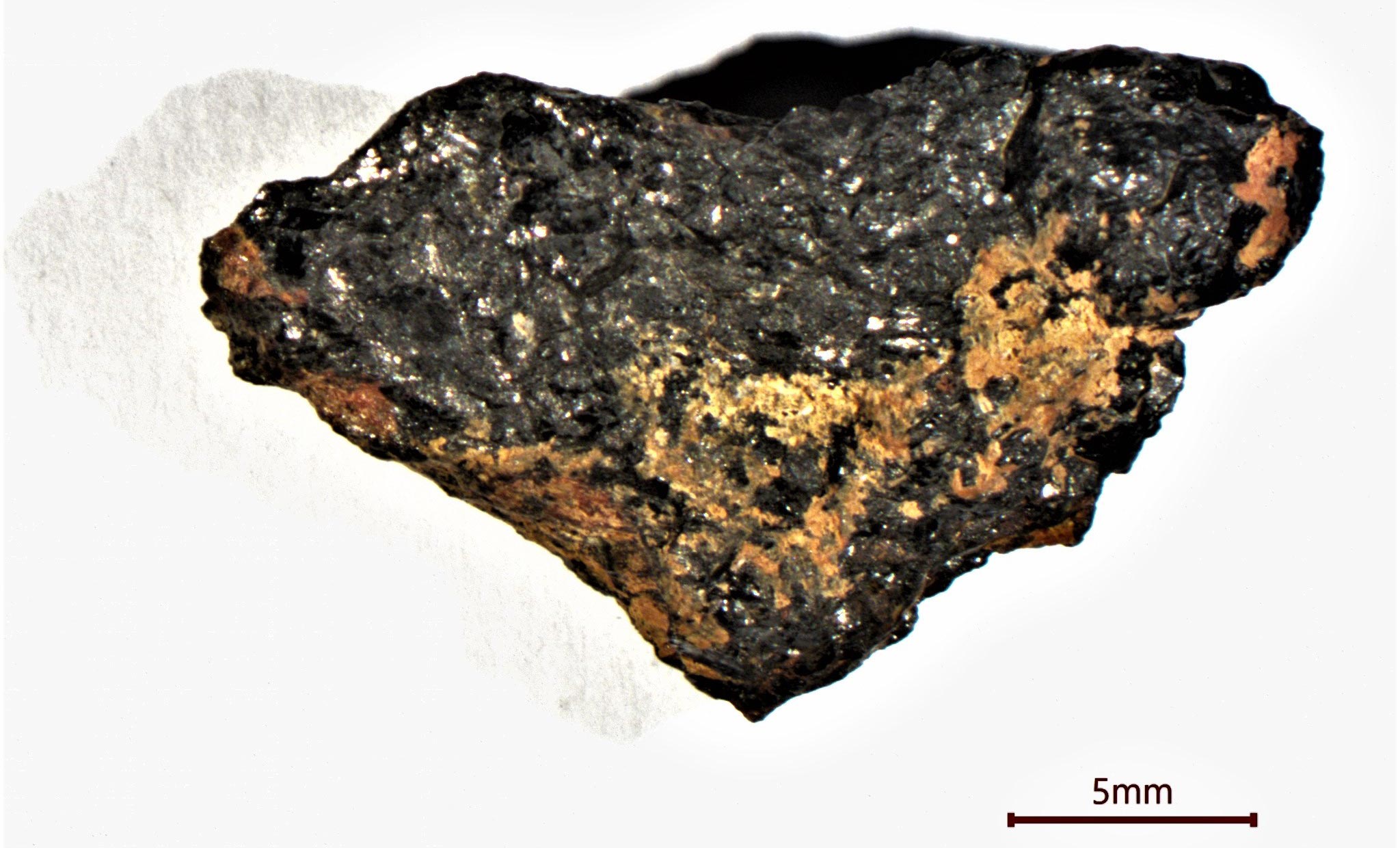
3 gramový (0,1 unce) vzorek kamene Hypatia. Vědci našli konzistentní vzor 15 prvků v kameni Hypatia. Tento vzorec se velmi liší od čehokoli v naší sluneční soustavě nebo v našem slunečním sousedství, v Mléčné dráze. Kredit: Romano Serra
Nové chemické „forenzní studie“ naznačují, že kámen zvaný Hypatia z egyptské pouště by mohl být prvním fyzickým důkazem nalezeným na Zemi po explozi supernovy typu Ia. Vzácné supernovy patří k nejenergetickejším událostem ve vesmíru.
To je závěr nové výzkumné studie Jana Kramera, George Pelianina a Hartmuta Winklera z[{“ attribute=““>University of Johannesburg, and others that has been published in the journal Icarus.
Since 2013, Belyanin and Kramers have discovered a series of highly unusual chemistry clues in a small fragment of the Hypatia Stone.
In the new research, they meticulously eliminate ‘cosmic suspects’ for the origin of the stone in a painstaking process. They have pieced together a timeline stretching back to the early stages of the formation of Earth, our Sun, and the other planets in our solar system.
A cosmic timeline
Their hypothesis about Hypatia’s origin starts with a star: A red giant star collapsed into a white dwarf star. The collapse would have happened inside a gigantic dust cloud, also called a nebula.
That white dwarf found itself in a binary system with a second star. The white dwarf star eventually ‘ate’ the other star. At some point, the ‘hungry’ white dwarf exploded as a supernova type Ia inside the dust cloud.
After cooling, the gas atoms which remained of the supernova Ia started sticking to the particles of the dust cloud.

The tiny samples of the extraterrestrial Hypatia stone next to a small coin. Rare type Ia supernovas are some of the most energetic events in the universe. Researchers found a consistent pattern of 15 elements in the Hypatia stone. The pattern is completely unlike anything in our solar system or our solar neighborhood, the Milky Way. Prof Jan Kramers (University of Johannesburg) is the lead author. Credit: Jan Kramers
“In a sense we could say, we have ‘caught’ a supernova Ia explosion ‘in the act’, because the gas atoms from the explosion were caught in the surrounding dust cloud, which eventually formed Hypatia’s parent body,” says Kramers.
A huge ‘bubble’ of this supernova dust-and-gas-atoms mix never interacted with other dust clouds.
Millions of years would pass, and eventually the ‘bubble’ would slowly become solid, in a ‘cosmic dust bunny’ kind of way. Hypatia’s ‘parent body’ would become a solid rock sometime in the early stages of formation of our solar system.
This process probably happened in a cold, uneventful outer part of our solar system – in the Oort cloud or in the Kuiper belt.
At some point, Hypatia’s parent rock started hurtling towards Earth. The heat of entry into the earth’s atmosphere, combined with the pressure of impact in the Great Sand Sea in southwestern Egypt, created micro-diamonds and shattered the parent rock.
The Hypatia stone picked up in the desert must be one of many fragments of the original impactor.
Kámen Hypatia by mohl být prvním konkrétním důkazem výbuchu supernovy typu Ia na Zemi. Supernovy typu Ia jsou vzácné – a patří k nejenergetickejším událostem ve vesmíru. Vědci UJ našli konzistentní vzor 15 prvků v kameni Hypatia objeveném v Egyptě. Tento vzorec se velmi liší od čehokoli v naší sluneční soustavě nebo v našem slunečním sousedství[{“ attribute=““>Milky Way. But most of the elements match the pattern of supernova type Ia models. Prof Jan Kramers (University of Johannesburg) is the lead author. Credit: Therese van Wyk
“If this hypothesis is correct, the Hypatia stone would be the first tangible evidence on Earth of a supernova type Ia explosion. Perhaps equally important, it shows that an individual anomalous ‘parcel’ of dust from outer space could actually be incorporated in the solar nebula that our solar system was formed from, without being fully mixed in,” says Kramers.
“This goes against the conventional view that dust which our solar system was formed from, was thoroughly mixed.”
Three million volts for a tiny sample
To piece together the timeline of how Hypatia may have formed, the researchers used several techniques to analyze the strange stone.
In 2013, a study of the argon isotopes showed the rock was not formed on earth. It had to be extraterrestrial. A 2015 study of noble gases in the fragment indicated that it may not be from any known type of meteorite or comet.

A high-voltage proton beam shows three trace elements in the extraterrestrial Hypatia stone, and their concentrations. Here, we see sulphur, iron and nickel for targets 1 and 2 within region 14 on the sample. Dr Georgy Belyanin (University of Johannesburg) used a 3-million Volt proton beam to analyse the tiny fragment of the stone. Credit: Georgy Belyanin
In 2018 the UJ team published various analyses, which included the discovery of a mineral, nickel phosphide, not previously found in any object in our solar system.
At that stage Hypatia was proving difficult to analyze further. The trace metals Kramers and Belyanin were looking for, couldn’t really be ‘seen in detail’ with the equipment they had. They needed a more powerful instrument that would not destroy the tiny sample.
Kramers started analyzing a dataset that Belyanin had created a few years before.
In 2015, Belyanin had done a series of analyses on a proton beam at the iThemba Labs in Somerset West. At the time, Dr. Wojciech Przybylowicz kept the three-million Volt machine humming along.
In search of a pattern
“Rather than exploring all the incredible anomalies Hypatia presents, we wanted to explore if there is an underlying unity. We wanted to see if there is some kind of consistent chemical pattern in the stone,” says Kramers.
Belyanin carefully selected 17 targets on the tiny sample for analysis. All were chosen to be well away from the earthly minerals that had formed in the cracks of the original rock after its impact in the desert.
“We identified 15 different elements in Hypatia with much greater precision and accuracy, with the proton microprobe. This gave us the chemical ‘ingredients’ we needed, so Jan could start the next process of analyzing all the data,” says Belyanin.

UJ researchers find that most of the elements they analysed in the extraterrestrial Hypatia stone fit the predictions from supernova Ia models well. The high-voltage proton beam data shows that for 9 of the 15 elements, concentrations are close to the predicted values. Prof Jan Kramers (University of Johannesburg) is the lead author. Credit: Jan Kramers
Proton beam also rules out solar system
The first big new clue from the proton beam analyses was the surprisingly low level of silicon in the Hypatia stone targets. The silicon, along with chromium and manganese, were less than 1% to be expected for something formed within our inner solar system.
Further, high iron, high sulfur, high phosphorus, high copper, and high vanadium were conspicuous and anomalous, adds Kramers.
“We found a consistent pattern of trace element abundances that is completely different from anything in the solar system, primitive or evolved. Objects in the asteroid belt and meteors don’t match this either. So next we looked outside the solar system,” says Kramers.
Různé analýzy kamene Hypatia v Egyptě naznačují, že nevznikl na Zemi ani v naší sluneční soustavě. Nová studie ukazuje, že si mohl zachovat neobvyklý chemický vzorec podobný explozi supernovy Ia. Dr. Georgi Pelyanin (Univerzita v Johannesburgu) použil 3 miliony voltů protonový paprsek k analýze malé části kamene. Kredit: Therese Van Wyck
ne z naší doby
Kramers poté porovnal koncentrační vzorec Hypatie s tím, co by se dalo očekávat v mezihvězdném prachu v našem slunečním rameni Mléčné dráhy.
„Podívali jsme se, zda vzor, který získáváme z průměrného mezihvězdného prachu v našem rameni Mléčné dráhy, odpovídá tomu, co vidíme v Hypatii. Opět zde nebyla absolutně žádná podobnost,“ dodává Kramers.
V tomto okamžiku data protonového paprsku také vyloučila čtyři „podezřelé“ z toho, kde by mohla být Hypatia.
Hypatia nevznikla na Zemi, nebyla součástí žádného známého typu komety nebo meteoritu a neskládala se z průměrného prachu vnitřní Sluneční soustavy a ani z průměrného mezihvězdného prachu.
Ne červený obr
Dalším nejjednodušším možným vysvětlením vzorce koncentrace prvků Hypatia by byla hvězda rudého obra. Rudé obří hvězdy jsou ve vesmíru běžné.
Ale data protonového paprsku vyloučila i hmotnostní tok z hvězdy červeného obra: Hypatia měla příliš mnoho železa, příliš málo křemíku a velmi nízké koncentrace těžkých prvků těžších než železo.
Neexistuje žádná supernova typu 2
Dalším „podezřelým“, který je třeba zvážit, byla supernova typu II. Supernovy typu II vaří hodně železa. Jsou také poměrně běžným typem supernov.
Data protonového paprsku Hypatie opět vyloučila nejslibnějšího podezřelého z „forenzní chemikálie“. Je vysoce nepravděpodobné, že by supernova typu II byla zdrojem exotických minerálů, jako je fosfid niklu v oblázku. V Hypatii bylo také mnohem více železa ve srovnání s křemíkem a vápníkem.
Je čas prozkoumat předpovězenou chemii jedné z nejdramatičtějších explozí ve vesmíru.
továrna na těžké kovy
Vzácnější typ supernovy také produkuje hodně železa. Supernovy typu Ia se v každé galaxii vyskytují pouze jednou nebo dvakrát za století. Ale vyrábějí nejvíce železa (Fe) ve vesmíru. Většina oceli na Zemi byla kdysi prvkem železo, který byl vytvořen supernovami Ia.
Také zavedená věda říká, že některé supernovy Ia zanechávají velmi zřetelná vodítka o „forenzní chemii“. Je to kvůli způsobu přípravy některých supernov Ia.
Za prvé, na konci svého života se hvězda rudého obra zhroutí do velmi hustého bílého trpaslíka. Bílí trpaslíci jsou obvykle neuvěřitelně stabilní po velmi dlouhou dobu a je velmi nepravděpodobné, že by explodovaly. V tomto však existují výjimky.
Bílý trpaslík může začít „tahat“ hmotu z jiné hvězdy v binárním systému. Dalo by se říci, že hvězda s bílým trpaslíkem „požírá“ svou družku. Nakonec se bílý trpaslík stane tak těžkým, horkým a nestabilním, že exploduje v supernovu Ia.
Jaderná fúze během exploze supernovy Ia by měla vytvořit velmi neobvyklé vzorce koncentrace prvků, jak předpovídají uznávané vědecké teoretické modely.
Také bílý trpaslík, který exploduje v supernově Ia, se nejen rozpadne na malé kousky, ale doslova exploduje na atomy. Materiál supernovy Ia je dodáván do vesmíru ve formě atomů plynu.
Při komplexním hledání dat o hvězdách a výsledků modelů nebyl tým schopen identifikovat žádnou chemickou látku podobnou nebo nejvhodnější kameni Hypatia ze specifické sady modelů supernov Ia.
Prvky forenzních důkazů
„Všechna data a teoretické modely supernov Ia ukazují mnohem vyšší podíly železa než křemíku a vápníku než modely supernovy 2,“ říká Kramers.
„V tomto ohledu jsou údaje z Hypatia Proton Beam Laboratory v souladu s údaji supernovy Ia.“
Celkem osm z 15 analyzovaných položek odpovídá očekávaným rozsahům poměrů železa. Jedná se o prvky křemík, síra, vápník, titan, vanad, chrom, mangan, železo a nikl.
Ne všechny z patnácti položek analyzovaných v Hypatii však splňují očekávání. U šesti z 15 prvků byly poměry 10 až 100krát vyšší než rozsahy předpovídané teoretickými modely pro supernovy typu 1A. Jedná se o prvky hliník, fosfor, chlor, draslík, měď a zinek.
„Protože bílý trpaslík se skládá z umírajícího červeného obra, Hypatia zdědila tyto proporce prvků pro šest prvků od hvězdy červeného obra. Tento jev byl pozorován u bílých trpaslíků v jiných výzkumech,“ dodává Kramers.
Pokud je tato hypotéza správná, pak by kámen Hypatia byl prvním konkrétním důkazem na Zemi o explozi supernovy typu Ia, jedné z nejúčinnějších událostí ve vesmíru.
Kámen Hypatia bude důkazem kosmického příběhu, který začal během raného formování naší sluneční soustavy a byl nalezen o mnoho let později v odlehlé poušti poseté jinými oblázky.
Reference: „The Chemistry of Extraterrestrial Carboniferous Stone“ Hypatia: A Perspective on Dust Heterogeneity in Interstellar Space“ od Jana D. Kramerse, Georgy A. Ikar.
DOI: 10.1016 / j.icarus.2022.115043

„Hudební učenec. Spisovatel. Zlý slanina evangelista. Hrdý twitter narkoman. Myslitel. Milovník internetu. Jemně okouzlující hráč.“

